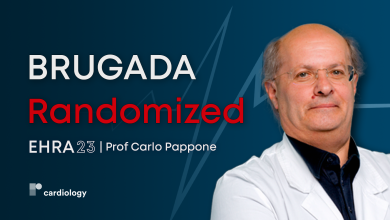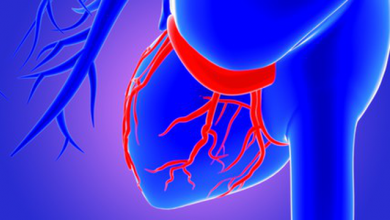Search results
Author(s):
Daniel X Augustine
,
Tracey Keteepe-Arachi
,
Aneil Malhotra
Added:
3 years ago
Author(s):
Subha V Raman
Added:
3 years ago
Cardiovascular disease (CVD) is the leading cause of death worldwide. In the US, for example, CVD kills more men than the next seven causes of death combined, and more women than the next 16 causes of death combined. Some of the most dreaded effects of CVD result from atherosclerotic coronary artery disease (CAD) and its sequelae, including chronic angina, acute myocardial infarction (MI), heart…
View more
Author(s):
Hector M Garcia-Garcia
,
Patrick W Serruys
Added:
3 years ago
To date, cardiologists have alleviated the symptoms of patients with significant lesions in the coronary angiography by stenting or coronary artery bypass grafting. While normal-looking coronary segments in angiography have been regarded as ‘disease-free’ and mild/moderate stenoses as ‘non-treatable’, today that we know that from these non-significantly diseased areas may potentially arise acute…
View more
Author(s):
Jean-Pierre Laissy
,
Jérôme Garot
Added:
3 years ago
Recent developments in cardiac magnetic resonance (CMR) imaging have led to a tremendous breakthrough in functional imaging and tissue characterisation of the left ventricular (LV) myocardium. Over the past few decades, numerous studies have shown significant improvement in CMR imaging of acute myocardial ischaemia and myocardial infarction (MI). Advances in hardware, acquisition sequences and…
View more
Author(s):
Subha V Raman
Added:
3 years ago
Cardiovascular disease (CVD) is the leading cause of death worldwide. In the US, for example, CVD kills more men than the next seven causes of death combined, and more women than the next 16 causes of death combined.1 Some of the most dreaded effects of CVD result from atherosclerotic coronary artery disease (CAD) and its sequelae, including chronic angina, acute myocardial infarction (MI), heart…
View more
Author(s):
Carlo Pappone
Added:
1 year ago
EHRA 23 - We are joined onsite by Prof Carlo Pappone (IRCCS Policlinico San Donato, IT) who outlines the key findings of the BRUGADA Randomized trial.
In a randomized controlled trial, 150 patients with Brugada syndrome were enrolled in to develop an evidence-based treatment for the condition. Patients were randomized in a 2:1 fashion to receive either catheter ablation treatment with an ICD, or…
View more
Author(s):
Koji Hasegawa
Added:
3 years ago
Myocardial infarction is often caused by the rupture of unstable plaque in atherosclerosis with mild-to-moderate stenosis. Research has revealed that local tissue inflammation is closely involved in the rupture of atherosclerotic plaque.1 Stabilization of atherosclerotic plaque by strictly managing the risk factors for coronary artery disease is a crucial strategy to prevent the recurrence of…
View more
Author(s):
Rifly Rafiudeen
,
Peter Barlis
,
Harvey D White
,
et al
Added:
2 years ago
Author(s):
Ying X Gue
,
Rahim Kanji
,
Sabiha Gati
,
et al
Added:
3 years ago
Cardiovascular disease is the leading cause of death globally, with 85% of cardiovascular deaths attributed to acute coronary syndrome (ACS) and stroke.1 The development of coronary atherosclerosis and subsequent plaque disruption, predominantly from plaque rupture or erosion, is responsible for the majority of ACS presentations. Persistent occlusion of the coronary artery due to thrombus,…
View more
Foreword
Author(s):
Juan Carlos Kaski
Added:
3 years ago
Article













 « First
« First